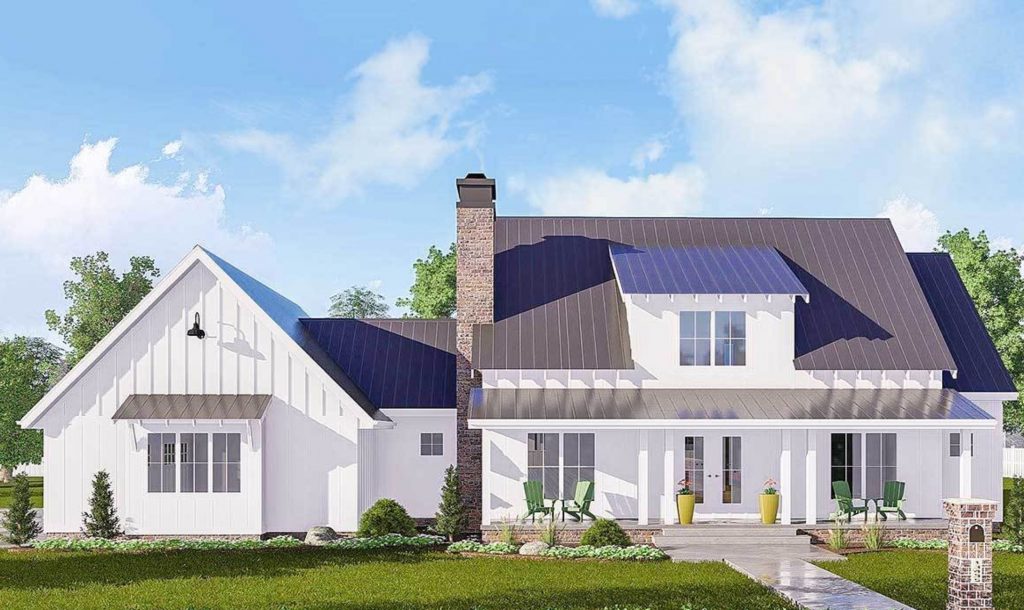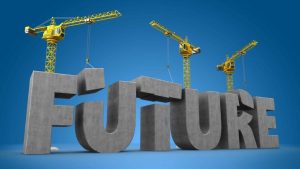Higher is the 2018 Word for Housing


Housing is booming in the U.S. The economy is doing well and consumer confidence is growing. But, according to the National Association of Realtors, there is a housing shortage. As a country, we aren’t building enough homes to cover the need for homes for our growing population. Demand exceeds supply. Labor rates, oil prices, and lumber tariffs are in the news and all are impacting the affordability of your new home. Modular construction is the modern method of home building that offers the way forward in today’s environment of higher!
Higher Interest Rates
If you are purchasing a home and you need a mortgage to do it, every interest rate increase means you qualify for a lower loan amount. This means you will make the exact same payment, but that payment will buy a smaller home or one with fewer amenities.
Rates are better today than they have been in 85% of history.
Rates today average 4.8%. This is historically still a great rate. However, in comparison, rates just a few years ago hovered in the mid-3% range. With the booming economy, interest rate increases are inevitable as the government tries to reduce inflation. Interest rates impact your buying power. For every .5% (one-half) percent increase in interest rate, your purchasing power may be decreased by 4 to 5 percent (the percentage is smaller for lower loan amounts). For every 1 percent interest rate increase, your purchasing power may be decreased by 9 to 11 percent (the percentage is smaller for lower loan amounts).
Higher Demand for Homes
 The National Association of Home Builders estimates builders will start fewer than 900,000 new homes in 2018, less than the roughly 1.3 million homes needed to keep up with population growth. The overall inventory of new and existing homes for sale hit its lowest level on record in the fourth quarter of 2017, at 1.48 million, according to the National Association of Realtors.
The National Association of Home Builders estimates builders will start fewer than 900,000 new homes in 2018, less than the roughly 1.3 million homes needed to keep up with population growth. The overall inventory of new and existing homes for sale hit its lowest level on record in the fourth quarter of 2017, at 1.48 million, according to the National Association of Realtors.
With the scarcity of labor, the increasing amount of building codes, and the rising difficulty in getting land ready for home building, it doesn’t appear that the deficit in homes that need to be built each year will be eliminated any time soon.
Higher Oil Prices Impact on Housing
The reduced global oil supply combined with a solid global economy has helped push oil prices higher. They fell below $30 a barrel in early 2016 but the current price of a barrel of oil has now risen above $75. Rising oil prices impacts home building in two ways.
Perceived Impacts – While there is no exact data to prove it, paying more at the pump for gas decreases consumer confidence and eats away at home budgets. The more money spent on gas means settling on a smaller payment so home buyers are left with the option of buying a smaller home or a home with fewer amenities than they would like.
Real Impacts – Many products in a home are manufactured using oil-based products: siding, roofing, flooring products, wire insulations, etc. When the price of oil more than doubles in a two year period, the pricing impacts are seen in common home building materials. These increases get reflected in the homes overall cost to build.
Higher Material Costs
A study by National Association of Home Builders economists shows that the increase in the cost of lumber since the beginning of 2017 has been enough to drive up the price of an average new single-family home by $6,388. Much of this is driven by the 24% tariff placed on Canadian lumber. Here are some other examples of a year over year price increases on common materials:
- Lumber and plywood increased 13.7 percent
- Aluminum mill shapes rose 11.4 percent
- Copper and brass mill shapes jumped 11.2 percent
- Gypsum products increased 8.4 percent
- Plastic construction products rose 5.8 percent
- Steel mill products jumped 4.9 percent
Higher Labor Costs
The construction industry struggled with finding labor before the great recession. With so many workers leaving the industry during the downturn there is a worsening shortage of skilled construction labor. Trade school programs are disappearing at a time when a construction worker can make more than many college graduates.
RELATED: IS STUDENT DEBT KILLING THE AMERICAN DREAM?
With severe labor shortages, unskilled labor is being used to staff skilled positions in the construction industry. This typically results in a decline in quality. The wage rates of skilled and unskilled labor is increasing. These increases are adding to the overall cost of building a new home.
When Higher is Good
2018 is a great year to sell your existing home if you have one. The National Association of Realtors reports that in April, home inventories for sale fell 6%. While this may sound bad initially, a peek behind the number shows that it is down because there aren’t enough homes on the market for buyers to buy. The next number shows that house prices have risen 5%. This means sellers are getting more for the same home now because of the lack of availability.
If you are a home seller, words used to market your home can push your home sales price even higher according to a recent Zillow blog. For example, the word “basketball” can increase the value of your listing by 4.5%. Use every advantage you have to sell sooner, rather than later. Using the windfall from the sale of your current home now means your dollar will go further before interest rates and new home prices rise further.
Higher Makes Now the Right Time to Build
Now is the time to build to avoid higher interest rates and higher building costs. When it comes to building your new home, modular construction can help mitigate many of the issues driving home prices higher. The efficient use of materials means the least waste. The buying power of factories can help offset at least some of the material price increases. The manufacturing environment of a factory means that unskilled labor can do more detailed work on homes under construction because of an easier training environment and better supervision.
The energy efficiency of a modular home means they are cheaper to own. With a lower power bill home, buyers can help offset the some of the impacts of higher home costs and higher interest rates. In today’s environment of higher costs, Modular Means More.
The post Higher is the 2018 Word for Housing appeared first on Impresa Modular.




